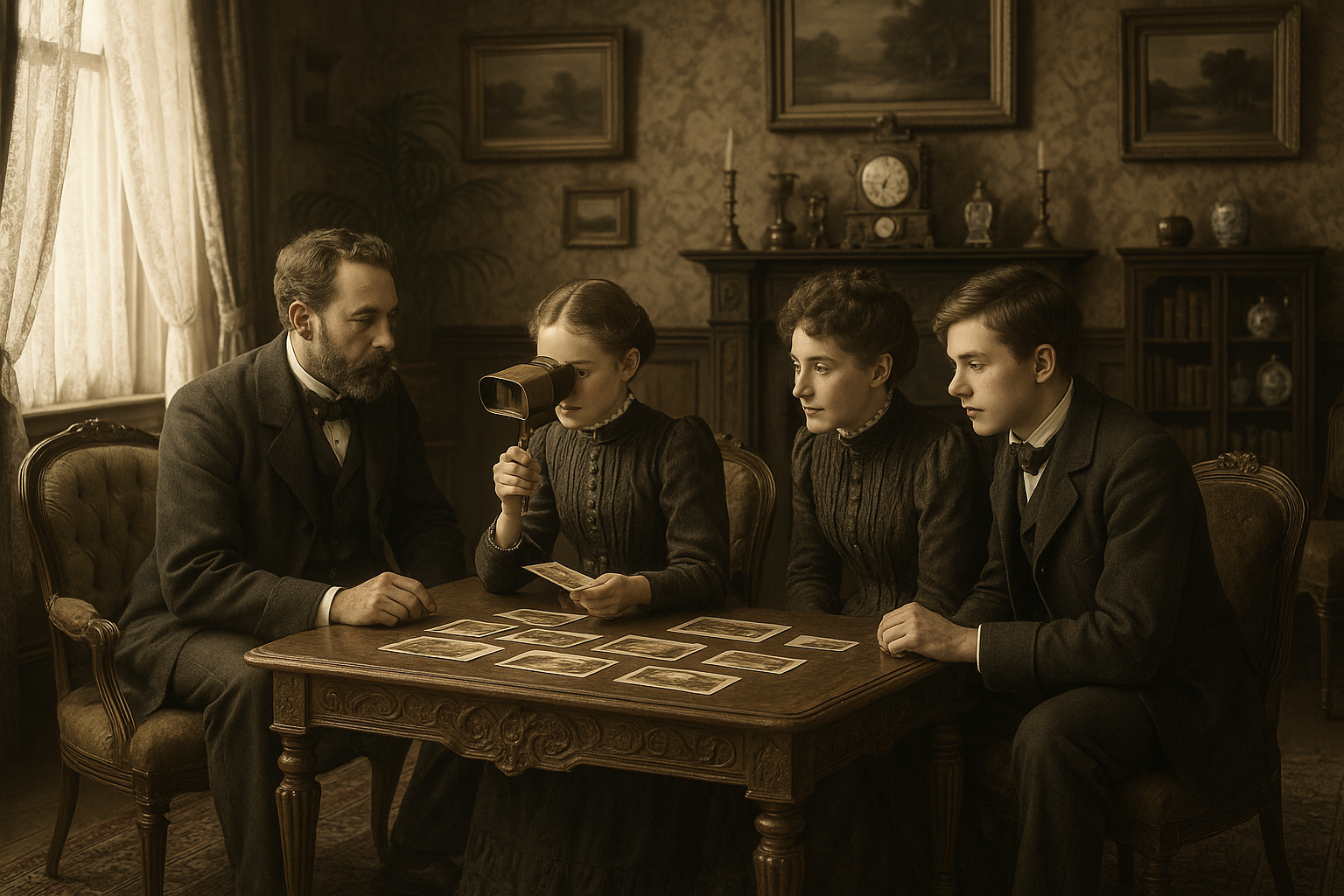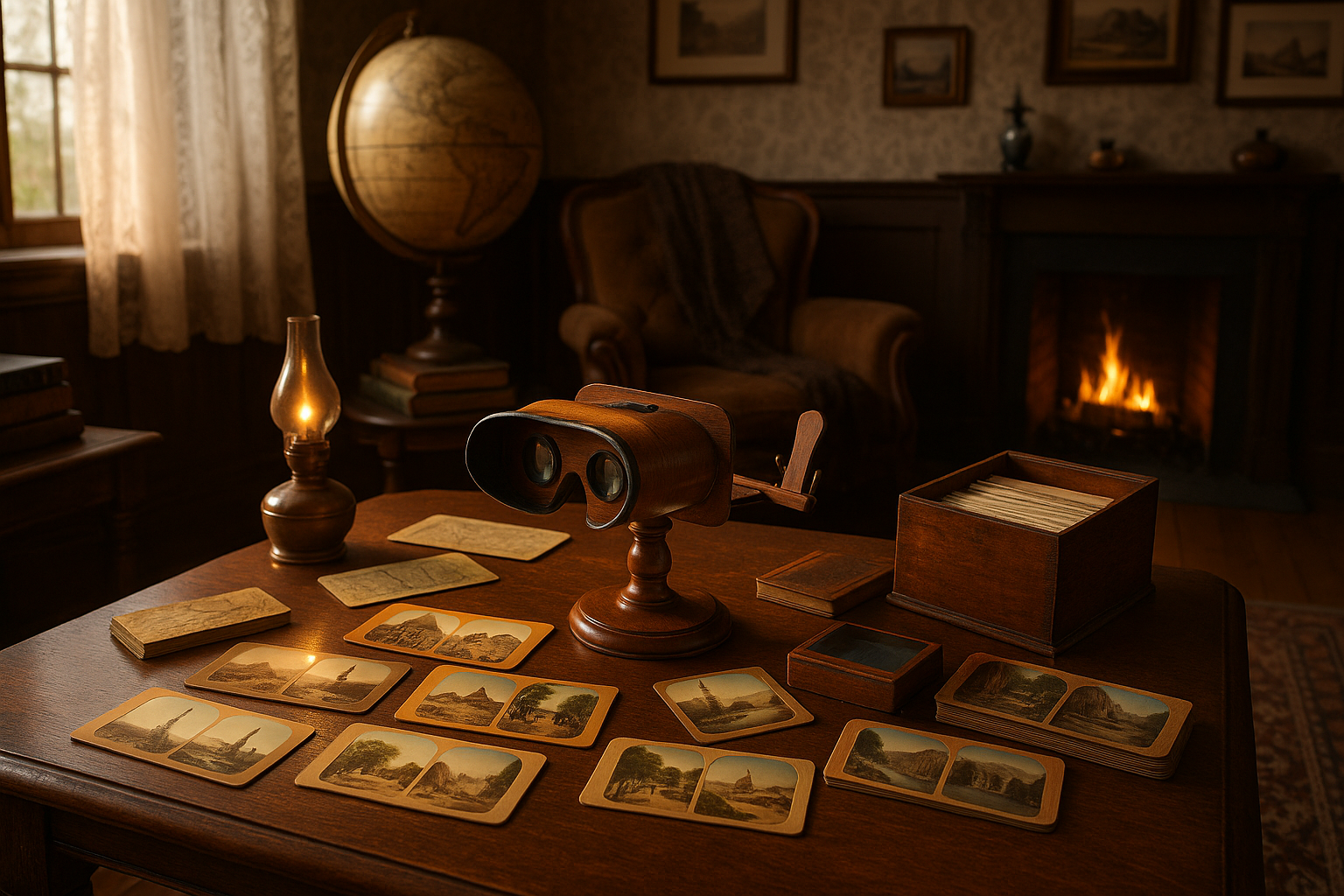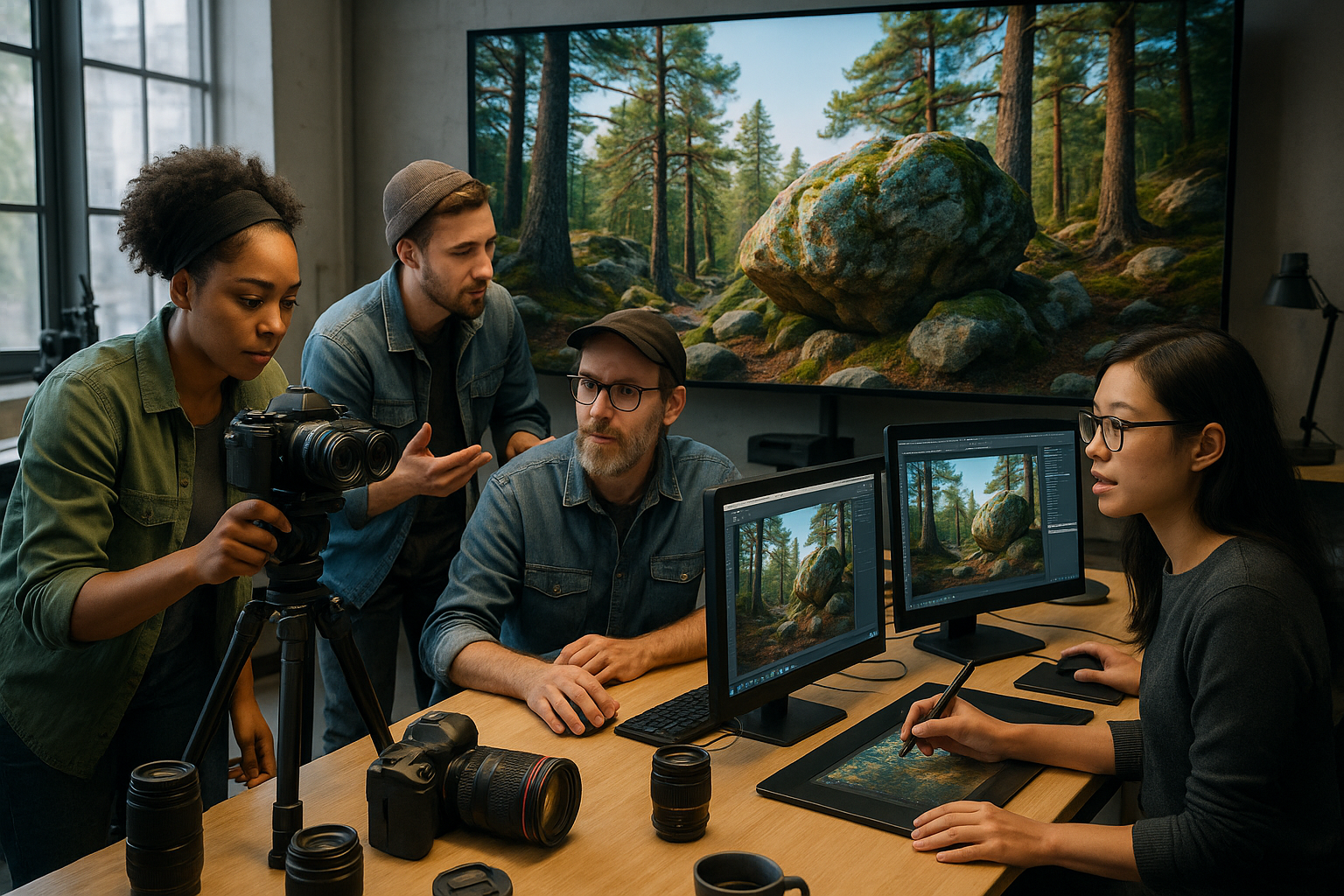In the vast tapestry of scientific discovery, few instruments have transformed our understanding of the natural world as profoundly as the microscope. From the moment Galileo Galilei peered through his rudimentary lenses to the cutting-edge technology of today, the evolution of microscope lenses has been nothing short of revolutionary. This journey through time and technology is not just about the progression of science, but also about the relentless human curiosity and ingenuity that have driven these advancements. The microscope has allowed us to unravel the mysteries of the minuscule, to see beyond the limits of the naked eye, and to unlock secrets that were once hidden from view. 🔬
As we delve into the fascinating history of microscope lenses, we embark on a narrative that begins with the simple, glass lenses of the 17th century. These early inventions, though primitive by today’s standards, laid the groundwork for centuries of innovation. The story of microscope lens evolution is one of incremental improvements, driven by the tireless efforts of inventors, scientists, and engineers. Each breakthrough, from the compound microscopes of Antonie van Leeuwenhoek to the achromatic lenses of the 19th century, has been a stepping stone, leading us closer to the incredible precision we possess today.
In this exploration, we will uncover the technological advancements that have shaped the course of microscopy. We will examine the pivotal moments in history that spurred innovation, such as the development of electron microscopes and the advent of digital imaging. Additionally, we will discuss the challenges faced by scientists as they pushed the boundaries of optical science, striving to create lenses that could reveal the finest details of the microscopic world. This journey is not merely a chronicle of technological achievements, but also a testament to the enduring spirit of inquiry that has propelled humanity forward.
Join us as we navigate through the past and present of microscope lens evolution. We will delve into the science behind lens construction, explore the impact of these advancements on fields such as biology and medicine, and ponder what the future might hold for microscopy. Whether you are a seasoned scientist, a curious student, or simply someone intrigued by the wonders of science, this article promises to be an enlightening expedition into the world of the unseen. Prepare to be amazed by the intricate dance of light and lenses that has opened up new frontiers in our quest to understand the universe at its smallest scales. 🌟
The Origins of Microscope Lenses: Ancient Beginnings
The journey of microscope lens evolution begins in antiquity, long before the sophisticated instruments we know today were conceptualized. The earliest instances of magnification can be traced back to the use of simple glass beads. These rudimentary tools provided a slight magnification effect, which piqued the curiosity of early scholars and craftsmen. Ancient civilizations, such as the Egyptians and Romans, utilized pieces of crystal or glass to create what we now recognize as the first magnifying lenses. The exploration into the properties of light and optics during this period laid the groundwork for future advancements.
It wasn’t until the late Middle Ages that significant progress in lens-making technology was achieved. The development of the convex lens, a breakthrough that allowed for a greater understanding of magnification principles, was pivotal. Glassmakers in Italy, particularly in the city of Venice, began experimenting with different shapes and compositions of glass to improve clarity and magnification. This era marked a time of both scientific curiosity and artistic craftsmanship, leading to innovations that would eventually fuel the Scientific Revolution.
During the Renaissance, scholars and inventors further refined lens-making techniques, setting the stage for the creation of the compound microscope. This period saw the emergence of figures such as Galileo Galilei, who, although more famous for his work with telescopes, also contributed to the understanding of optics. As glassmaking techniques improved, so did the quality of lenses, enabling greater exploration of the microcosm.
The Renaissance and the Birth of the Compound Microscope
The Renaissance period was a time of great intellectual awakening, characterized by a renewed interest in science and exploration. It was during this time that the compound microscope was born. Zacharias Janssen, a Dutch spectacle maker, is often credited with inventing the first compound microscope around 1590. This device used multiple lenses to achieve higher magnification than single-lens magnifiers, opening new avenues for scientific inquiry.
With the compound microscope, scientists could now observe the minutiae of the natural world in unprecedented detail. This period saw the emergence of pioneers such as Robert Hooke, who famously documented his observations in “Micrographia” (1665). Hooke’s detailed drawings of microscopic structures, including the cellular structure of cork, introduced the concept of the “cell” to the scientific community. His work exemplified the potential of the microscope to revolutionize biological studies.
The improvements in lens quality during this period were driven by experimentation with different glass formulations and grinding techniques. These advancements were crucial in overcoming the limitations of early lenses, which often suffered from issues like chromatic aberration. By the 17th century, the compound microscope had become an indispensable tool for scientists, facilitating groundbreaking discoveries in fields such as biology and medicine.
Technological Innovations in the 19th Century
The 19th century was a period of remarkable technological innovation in the realm of microscopy. This era saw the introduction of achromatic lenses, which corrected chromatic aberration by combining lenses made of different types of glass. These lenses significantly improved image clarity and paved the way for further advancements in microscope design. The contributions of scientists like Joseph Jackson Lister, who developed the first successful achromatic lenses in the 1830s, were instrumental in refining the optical quality of microscopes.
Another significant advancement during this time was the development of the oil immersion lens, which enhanced resolution by increasing the numerical aperture of the microscope. This innovation allowed for the observation of finer details within specimens, further expanding the capabilities of microscopic analysis. The oil immersion technique remains a staple in modern microscopy, illustrating the enduring impact of 19th-century innovations.
The 19th century also witnessed the rise of major microscope manufacturers, such as Carl Zeiss in Germany. Zeiss, along with his colleagues Ernst Abbe and Otto Schott, pioneered the use of specialized optical glass and precision engineering in microscope production. Their collaboration led to the development of microscopes with unparalleled precision and reliability, establishing a standard for scientific instruments that persists to this day.
The Digital Revolution and Modern Microscopy
The 20th and 21st centuries have brought about a digital revolution in the field of microscopy, transforming traditional optical microscopes into sophisticated tools for scientific discovery. The integration of digital technology has allowed for the capture and analysis of high-resolution images, enabling researchers to study specimens with unprecedented accuracy. Modern digital microscopes are equipped with advanced imaging software that facilitates data analysis and sharing, revolutionizing collaborative research efforts.
One of the most significant breakthroughs in modern microscopy is the development of electron microscopes. These instruments use beams of electrons instead of light to achieve magnifications far beyond the capabilities of traditional optical microscopes. The transmission electron microscope (TEM) and the scanning electron microscope (SEM) have become indispensable tools in fields ranging from materials science to biology, providing detailed insights into the structure and composition of materials at the nanoscale.
Another groundbreaking innovation is the advent of super-resolution microscopy techniques, such as STED (Stimulated Emission Depletion) and PALM (Photoactivated Localization Microscopy). These methods break the diffraction limit of light, allowing scientists to observe structures at the molecular level with exceptional clarity. Super-resolution microscopy has opened new frontiers in cell biology and molecular research, enabling discoveries that were once thought impossible.
Comparative Analysis of Historical and Modern Microscope Technologies
The evolution of microscope lenses over the centuries can be seen in a comparative analysis of historical and modern technologies. Understanding the advancements and differences can provide a comprehensive view of how microscopy has shaped scientific exploration. Below is a table comparing key features of microscopes from different eras:
| Era | Lens Type | Magnification Capabilities | Technological Innovations |
|---|---|---|---|
| Ancient and Medieval | Simple Glass Beads | 1x to 3x | Rudimentary magnification; early exploration of optics |
| Renaissance | Convex Lenses | Up to 30x | Invention of the compound microscope |
| 19th Century | Achromatic and Oil Immersion Lenses | Up to 1000x | Correction of chromatic aberration; enhanced resolution |
| Modern Era | Digital and Electron Lenses | Up to 10,000,000x | Integration of digital technology; super-resolution techniques |
For a deeper understanding of these technologies, you may want to watch this video on the evolution of microscopes on the YouTube channel “Science Channel”.
The advancements in microscope lenses illustrate a fascinating journey through time, marked by continuous innovation and discovery. Each era brought about new techniques and technologies, enabling scientists to explore the natural world in ever-greater detail. From the simple magnifying glasses of antiquity to the sophisticated digital and electron microscopes of today, the evolution of microscope lenses is a testament to human curiosity and ingenuity. As technology continues to advance, the potential for new discoveries remains limitless, promising to unlock even more secrets of the microscopic world. 🌟

Conclusion
Conclusion: Unlocking the Secrets of Microscope Lens Evolution: A Journey Through Time and Technology
As we draw this exploration of microscope lens evolution to a close, it’s essential to reflect on the transformative journey that has unfolded across the centuries. From the rudimentary lenses of the 16th century to today’s cutting-edge optical technologies, the evolution of microscope lenses is a testament to human ingenuity, perseverance, and the relentless pursuit of knowledge. This exploration not only highlights the historical milestones but also underscores the profound impact these advancements have had on science, medicine, and technology.
Key Takeaways
Firstly, the historical roots of microscope lens development lay the foundation for understanding their evolution. The pioneering work of early scientists like Antonie van Leeuwenhoek and Robert Hooke set the stage for future innovations. Their initial breakthroughs, characterized by handcrafted lenses and basic magnification techniques, provided a glimpse into the microscopic world that was previously invisible to the naked eye.
As the journey progressed into the 19th and 20th centuries, technological advancements revolutionized the field. The introduction of achromatic lenses and the refinement of optical theories by figures such as Ernst Abbe led to dramatic improvements in image clarity and resolution. These developments were instrumental in enabling scientists to observe intricate cellular structures and biological processes, thus propelling advancements in biology and medicine.
The latter part of the 20th century and the early 21st century witnessed another leap forward with the integration of digital technology and computer-aided design in microscopy. Innovations such as confocal microscopy and super-resolution techniques have pushed the boundaries of what can be visualized and analyzed, opening up new realms of scientific inquiry and discovery.
The Importance of Microscope Lens Evolution
Understanding the evolution of microscope lenses is crucial for several reasons. Firstly, it offers insights into the scientific process, illustrating how incremental advancements can lead to significant breakthroughs over time. It also highlights the interdisciplinary nature of technological development, where physics, engineering, and biology intersect to drive innovation.
Moreover, the impact of these advancements extends far beyond the confines of scientific laboratories. They have played a pivotal role in medical diagnostics, environmental monitoring, and even the development of new materials. The ability to visualize and understand microscopic phenomena has profound implications for public health, environmental conservation, and technological innovation.
Call to Action
As we conclude this journey through the evolution of microscope lenses, it is important to recognize that the story is far from over. Continued advancements in nanotechnology, artificial intelligence, and materials science promise to further revolutionize the field of microscopy. As such, we invite you, the reader, to remain engaged and curious about these ongoing developments. Consider how these technological advancements could impact your field of work or study and explore opportunities to apply this knowledge in practical, innovative ways.
We encourage you to share this article with colleagues, students, and anyone interested in the fascinating world of microscopy. Engaging in discussions and sharing insights can foster a deeper understanding and appreciation for the vital role of microscope lenses in advancing science and technology. Your comments and thoughts are welcome and valued—please feel free to share them below.
As we look to the future, let us be inspired by the legacy of curiosity and discovery that has driven the evolution of microscope lenses. Together, we can continue to unlock the secrets of the microscopic world and pave the way for new scientific horizons. 🔬✨
For further reading and to explore some of the sources that informed this article, consider visiting:
– The Royal Society: The History of Microscopes
– Nature: Advances in Microscopy
– ScienceDirect: Recent Developments in Optical Microscopy
Thank you for joining us on this enlightening journey through time and technology.
Toni Santos is a visual historian and artisan whose creative lens is captivated by the forgotten marvels of antique optical devices. Through his thoughtful storytelling, Toni revives the instruments that once transformed light into wonder—camera obscuras, magic lanterns, kaleidoscopes, and other ingenious tools that shaped our earliest visual imaginations.
His journey is rooted in a fascination with how humans have long sought to bend, reflect, and reveal the unseen. Whether tracing the mechanical poetry of 19th-century projectors or illustrating the tactile elegance of early lenses, Toni’s work invites us to see vision itself as an evolving art form.
Blending handcrafted design with historical inquiry, Toni brings to life the material soul of these devices—celebrating not just how they functioned, but what they meant. His creations and curated stories illuminate a world where science, illusion, and beauty were intricately linked through glass and brass.
As the curator of Vizovex, Toni shares detailed studies, reconstructed artifacts, and immersive content that help others rediscover the origins of visual technology and the magic of analog perception.
His work is a tribute to:
The craftsmanship behind early visual instruments
The wonder of seeing through the eyes of another century
The intersection of optics, art, and imagination
Whether you’re a collector, a designer, or someone drawn to the lost poetry of vision, Toni welcomes you into a world where light is a storyteller—one prism, one lens, one forgotten invention at a time.





